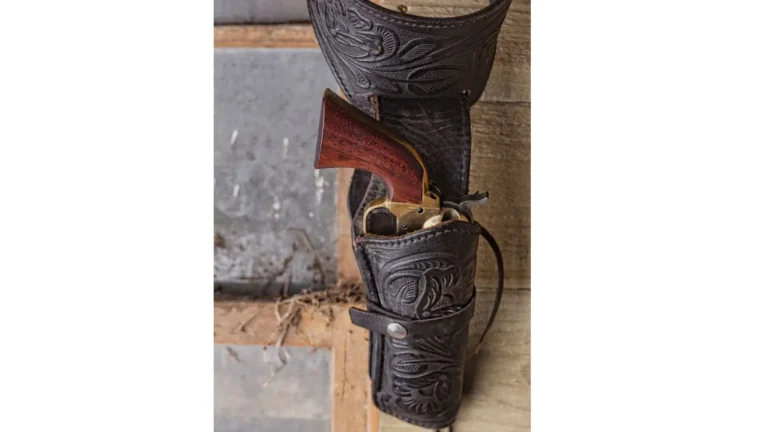Introduction
Ankle holsters have long been popular among concealed carry enthusiasts, offering a discreet and practical solution for firearm owners. Whether you are a novice or an experienced user, understanding the advantages and considerations of ankle holsters can help you make an informed decision. For those interested in products like the Glock 43 ankle holster, this guide will provide valuable insights into the world of ankle holsters.
Many people find carrying a gun on your ankle appealing because it provides several unique advantages. Why you might choose an ankle holster, how to choose the best one, and important safety, comfort, and accessibility tips are all covered in this article. By the end of this comprehensive guide, you’ll understand how to incorporate an ankle holster effectively into your everyday carry routine.
Why Choose Ankle Holsters?
Choosing an ankle holster has several unique advantages. It’s ideal for discreet carry, especially when you must keep your firearm hidden under professional attire or in environments where other methods might not suit. Ankle holsters are very helpful for people who need to keep up a professional appearance but still want the security and safety of carrying a concealed weapon. They provide a great degree of concealment, essential for people who value secrecy.
The capacity to carry an additional firearm is a significant benefit. Ankle holsters are a common means of carrying a backup weapon for law enforcement officers and other high-risk workers, providing extra security. This means you have an accessible firearm even if your primary one becomes unreachable or compromised in a critical situation. Ankle holsters can be lifesavers, providing an additional option for self-defense when you need it most.
Choosing the Right Ankle Holster
Selecting the right ankle holster involves evaluating several vital factors to ensure functionality and comfort. Material, size, and adjustability are crucial considerations that affect your overall experience.
Material
The holster’s material can impact both comfort and durability. Leather is a traditional choice due to its comfort and longevity, while synthetic materials like nylon offer lightweight and breathable options. Leather tends to mold to your leg over time, providing a custom fit, while synthetic materials can offer better breathability and moisture-wicking properties, essential for all-day wear.
Size and Adjustability
The holster size should be compatible with your firearm, and adjustable straps ensure a secure and comfortable fit. Look for holsters with padded straps to prevent chafing. Velcro straps and buckles, for example, are adjustable features that let you adjust the fit and ensure that the holster stays in place without discomfort. If possible, try on several models to find one that fits your leg snugly but comfortably, ensuring it won’t slip during movement.
Comfort and Fit
Comfort is an essential factor when choosing an ankle holster. Wearing an uncomfortable holster can be distracting and lead to long-term issues such as chafing or injury. To address these concerns, opt for holsters that feature padded straps and breathable materials. Additionally, ensure that the holster offers adjustability to fit snugly around your ankle, thus preventing it from slipping or shifting during activities like walking or running.
Choosing a holster that is comfortable enough to wear for extended periods is crucial, especially if you have a long workday or are on your feet often. Always try on multiple models if possible to find the one that suits you best. You might not notice discomfort immediately, but over time, an ill-fitting holster can become quite bothersome, affecting your daily routine and overall satisfaction with your concealed carry method.
Ease of Access
Ankle holsters are a great option for backup guns because of their accessibility, one of their main benefits. In high-stress situations, quickly reaching your firearm can be a lifesaver. The unique positioning on your ankle allows for a less noticeable draw, which can be advantageous when you need to access your weapon discreetly.
Practicing your drawing technique ensures you can access your weapon swiftly and smoothly. Frequent practice sessions will aid in developing muscle memory, speeding up and improving your drawings’ effectiveness when it counts.
Safety and Secure Concealment
Safety is critical when choosing any holster, and ankle holsters are no exception. One of the main benefits of ankle holsters is their secure concealment. This reduces the risk of your firearm being detected or accidentally falling out. Additionally, look for holsters with retention features such as thumb breaks or trigger guards to keep your firearm securely in place.
Ensure you familiarize yourself with the holster’s retention features and practice disengaging them during your draw. This practice can prevent accidental discharges and improve safety and confidence while carrying. Understanding how your holster works and incorporating safety checks into your routine will enhance your concealed carry experience, ensuring you feel secure and responsible while carrying your firearm.
Conclusion
In conclusion, ankle holsters offer concealed carry enthusiasts a practical and discreet solution. By understanding their benefits and following the tips in this guide, you can make an informed choice and effectively incorporate an ankle holster into your everyday carry routine. Whether you’re interested in a Glock 43 ankle holster or another model, the key is to find a holster that meets your needs for comfort, accessibility, and safety. With the right holster, you can enjoy knowing your firearm is securely and discreetly carried, ready to protect you when it matters most.



